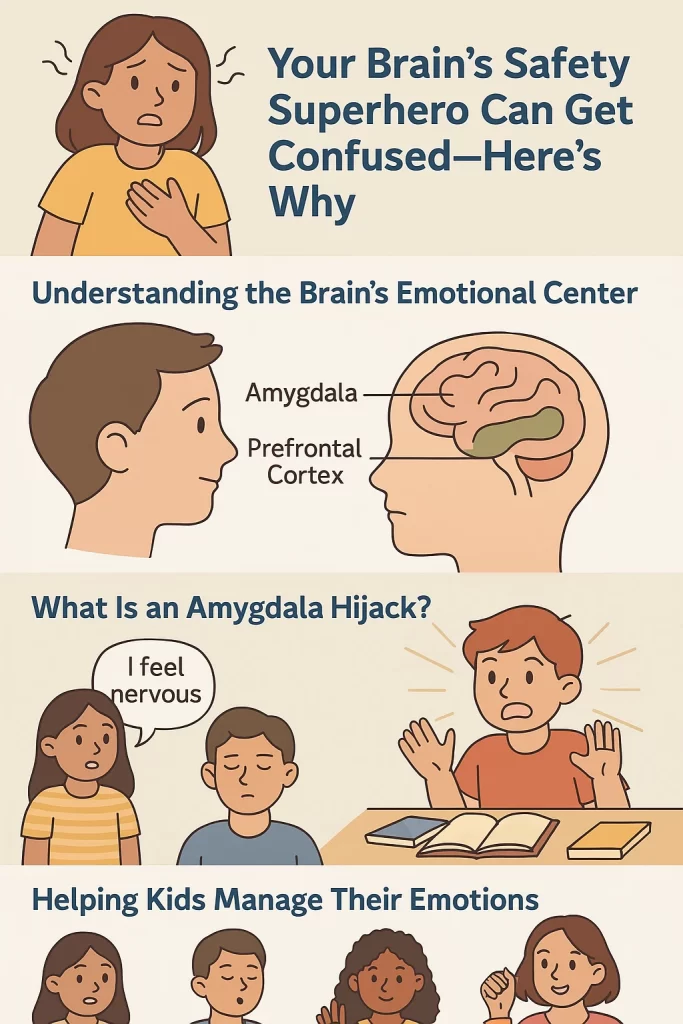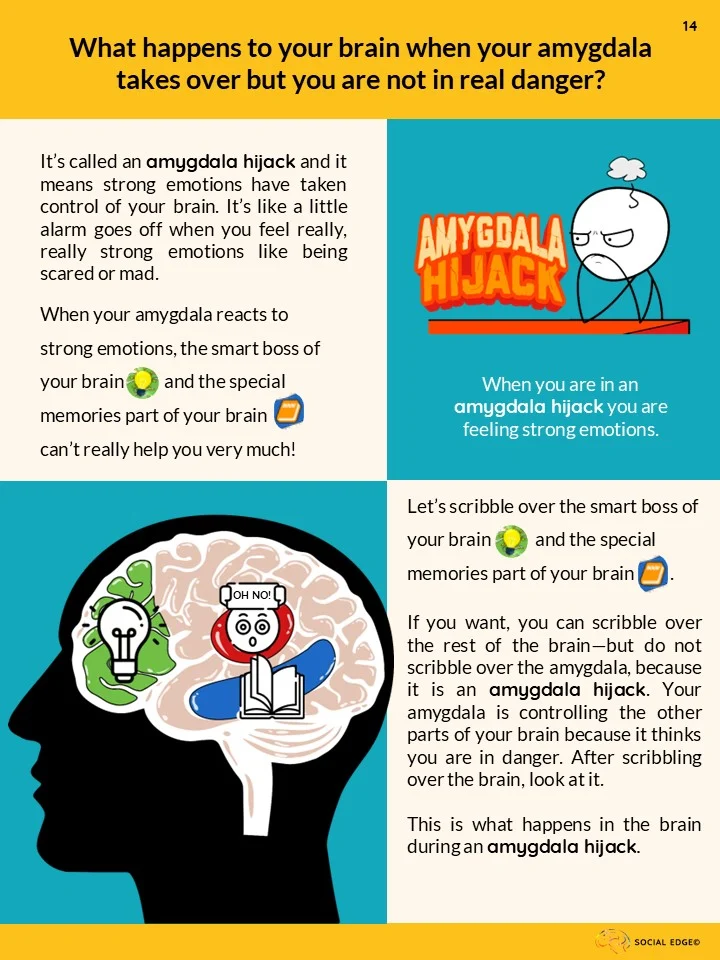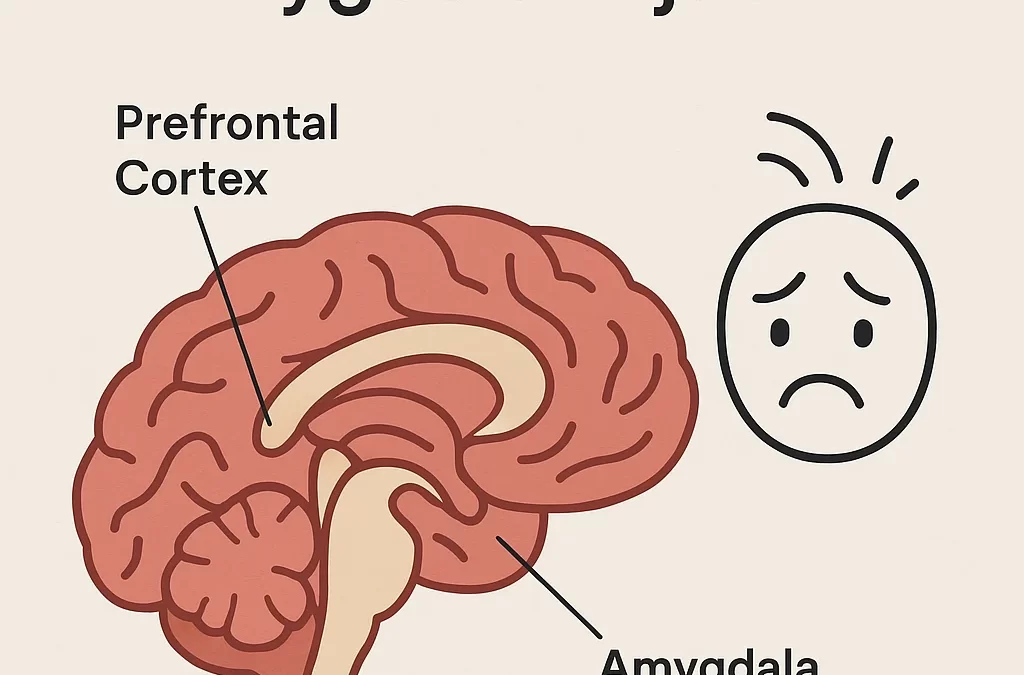By Social Edge Ambassador: Ishita Singh
Have you ever found yourself feeling scared, anxious, or overwhelmed—yet nothing around you seemed dangerous? Maybe your heart started pounding before a big test, or you felt a knot in your stomach after a disagreement with a friend. Even though there wasn’t any real danger, your body still reacted as if something was seriously wrong.
That’s your amygdala at work. Think of it as your brain’s personal safety superhero. It’s the part of your brain that jumps into action to keep you safe by triggering the fight, flight, or freeze response. When it senses danger, it sounds the alarm. The problem? Sometimes it gets a little too eager and sets off that alarm when you’re not actually in danger. This is called an amygdala hijack.
Understanding the Brain’s Emotional Center
To better understand what’s going on, let’s explore two important parts of the brain: the amygdala and the prefrontal cortex.

The amygdala is a small, almond-shaped structure deep in the brain that acts as your emotional radar. It detects possible threats and immediately activates your body’s response—fast heart rate, sweaty palms, and tense muscles. It does this automatically, without thinking.
The prefrontal cortex, located right behind your forehead, is the “thinking” part of your brain. It helps with decision-making, problem-solving, and calming yourself down when you’re upset. It’s responsible for logic, reflection, and emotional control.
When everything is working well, these two brain parts communicate effectively.
However, under stress, the amygdala can take over and shut the prefrontal cortex out. Dr. Dan Siegel describes this using the “flipping your lid” hand model: when your emotions are too intense, your “thinking brain” lifts away, and your “feeling brain” takes charge. This makes it hard to think clearly, focus, or stay calm.
What Is an Amygdala Hijack?
An amygdala hijack happens when your brain responds to something emotionally intense—even though it’s not actually dangerous. You might feel like you’re in a crisis when it’s just a challenging situation.

This overreaction often happens because of past experiences or worries about the future. For example, if you’ve had a hard time making friends in the past, just walking into a new classroom might feel scary, even if no one has done anything wrong. Your amygdala might remember a similar situation and send your body into panic mode, just in case.
Even something small—like being left out of a game, forgetting your homework, or being teased—can spark an emotional flood. Your body reacts quickly, and it may feel like you’re under attack, even though you’re actually just uncomfortable or disappointed.
Helping Kids Manage Their Emotions
The good news? You can learn to manage these big feelings. One of the first steps is understanding what’s going on in your brain. When you realize your amygdala is “hijacking” your emotions, you can take steps to calm it down and bring your prefrontal cortex back online.
Here are a few helpful strategies:
- Name the feeling – Saying “I feel nervous” or “I feel upset” helps the brain label the emotion and can reduce its intensity.
- Deep breathing – Take slow, deep breaths in through the nose and out through the mouth. This helps calm the nervous system.
- The 5-4-3-2-1 Grounding Technique – Notice 5 things you can see, 4 things you can touch, 3 you can hear, 2 you can smell, and 1 you can taste. This technique helps bring your focus back to the present moment.
- Use visuals – Drawing the brain or acting out the “flipping your lid” model with your hand can help kids better understand what’s going on inside their heads.
Over time, recognizing the signs of an amygdala hijack and practicing calming strategies can help children (and adults!) feel more in control of their emotions.
Final Thoughts
It’s comforting to know that the brain’s “safety superhero” is just trying to protect us—even when it gets a little confused. Sometimes, our amygdala tries to help when we don’t actually need saving. By learning how to identify when that happens and taking steps to slow things down, we can “flip our lids” back on and face challenges with calm and confidence.
Remember, the more we understand our brains, the better we can understand ourselves—and that’s a superpower all on its own.

